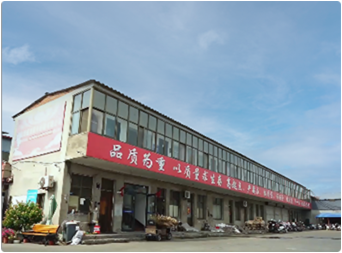ное. . 27, 2024 04:45 Back to list
Concrete Applications for Threaded Rods in Construction and Structural Support Solutions
The Importance of Threaded Rods in Concrete Construction
In the world of construction, particularly when it comes to concrete structures, the use of threaded rods has become increasingly prevalent. These versatile fasteners play a crucial role in ensuring the structural integrity, stability, and longevity of various concrete applications. This article explores the significance of threaded rods in concrete projects, detailing their applications, advantages, and best practices for installation.
What are Threaded Rods?
Threaded rods, also known as all-thread rods or stud bolts, are elongated fasteners that are uniformly threaded along their entire length. Made from materials such as stainless steel, carbon steel, or other alloys, these rods are designed to provide high tensile strength and resistance to corrosion, making them ideal for use in harsh environments. Their threaded design allows for the attachment of nuts and other components, enabling secure connections between different structural elements.
Applications in Concrete Structures
Threaded rods are utilized in a variety of concrete applications, primarily due to their ability to provide tension and support. Below are some key applications
1. Anchor Bolts Threaded rods are often used as anchor bolts embedded in concrete to provide a secure connection for structural supports, such as columns or heavy machinery.
2. Post Tensioning In post-tensioned concrete construction, threaded rods are used to create tension in concrete beams or slabs. This process enhances the load-bearing capacity of structures while reducing the risk of cracking.
3. Formwork and Bracing During the construction phase, threaded rods can be employed to secure formwork in place or brace structural components until the concrete sets. This is critical for maintaining the integrity of the structure during curing.
4. Reinforcement Threaded rods can serve as supplementary reinforcement in concrete elements. They help distribute loads and resist shear forces, contributing to the overall strength of the concrete.
Advantages of Using Threaded Rods
The adoption of threaded rods in concrete construction offers numerous advantages
- Versatility Threaded rods come in various lengths and diameters, making them suitable for multiple applications. They can be easily cut to size and are compatible with different types of fasteners.
threaded rod concrete

- Strength and Durability Due to their robust construction, threaded rods possess high tensile strength, which is essential for applications requiring load-bearing capabilities. Additionally, corrosion-resistant materials ensure a longer lifespan, especially in outdoor or moist environments.
- Ease of Installation The threaded design allows for straightforward installation and adjustment. Craftsmen can easily connect or disconnect components as needed, facilitating repairs or modifications to existing structures.
- Cost-Effective Using threaded rods can reduce labor time and costs associated with installation. Their durability also minimizes the need for frequent replacements, leading to reduced maintenance expenses over time.
Best Practices for Installation
Proper installation of threaded rods in concrete is vital for ensuring their effectiveness. Here are some best practices
1. Site Preparation Ensure that the installation site is adequately prepared, with clean and stable concrete surfaces. Properly placed rods can drastically impact structural performance.
2. Choosing the Right Rods Select threaded rods made from appropriate materials based on the environmental conditions and load requirements. For instance, stainless steel rods are ideal for coastal areas due to their corrosion resistance.
3. Correct Embedding Depth Follow recommendations for the embedding depth of threaded rods to maximize their load-bearing capability. Insufficient embedment can lead to structural failure.
4. Torque Specifications Adhere to torque specifications during installation to guarantee that the nuts are tightened properly. Over-tightening or under-tightening can compromise the connection.
5. Inspection Regularly inspect threaded connections to ensure they remain secure and free from signs of corrosion or wear.
Conclusion
Threaded rods are an indispensable component of modern concrete construction. Their ability to enhance structural stability, support tension, and provide ease of use reflects their importance in the engineering and architectural fields. As construction techniques continue to evolve, the role of threaded rods in ensuring safe and durable concrete structures remains critical. By adhering to best practices and properly utilizing these fasteners, engineers and builders can significantly improve the performance and longevity of their concrete projects.


